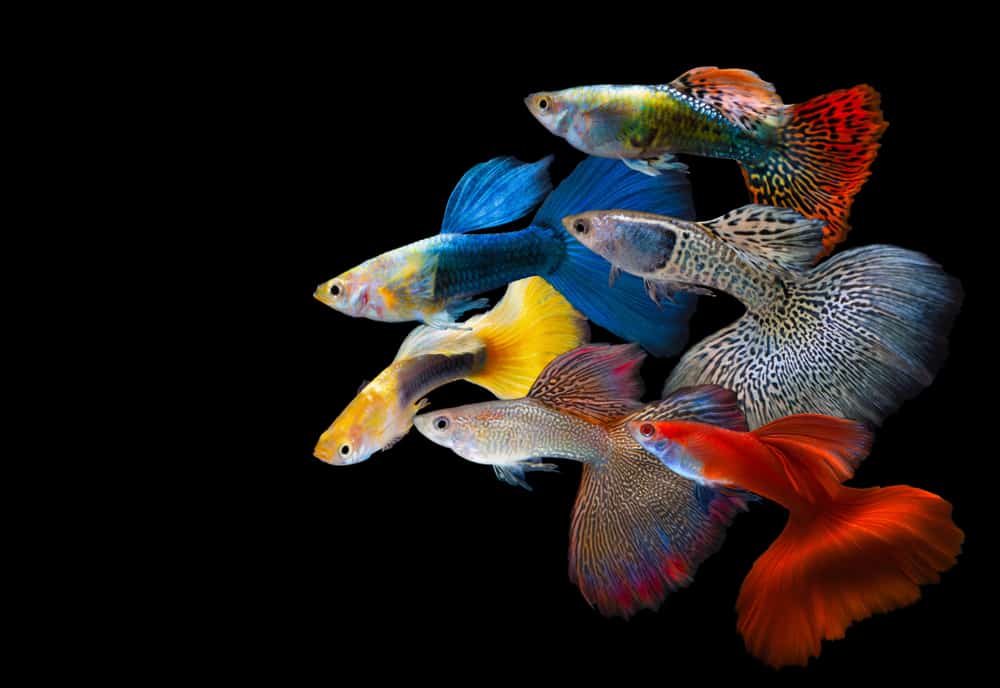
Guppies, also known as rainbow fish, are majestic creatures.
They’re easy to take care of, but they need a suitable environment like any other fish.
If you want your guppies to thrive, you’ll need to mimic their natural living conditions.
In this article, you’ll find out about guppies’ preferred water temperatures, if they need heaters, and what happens if you keep them in cold or hot temperatures for too long.
What’s the Ideal Water Temperature for Guppies?
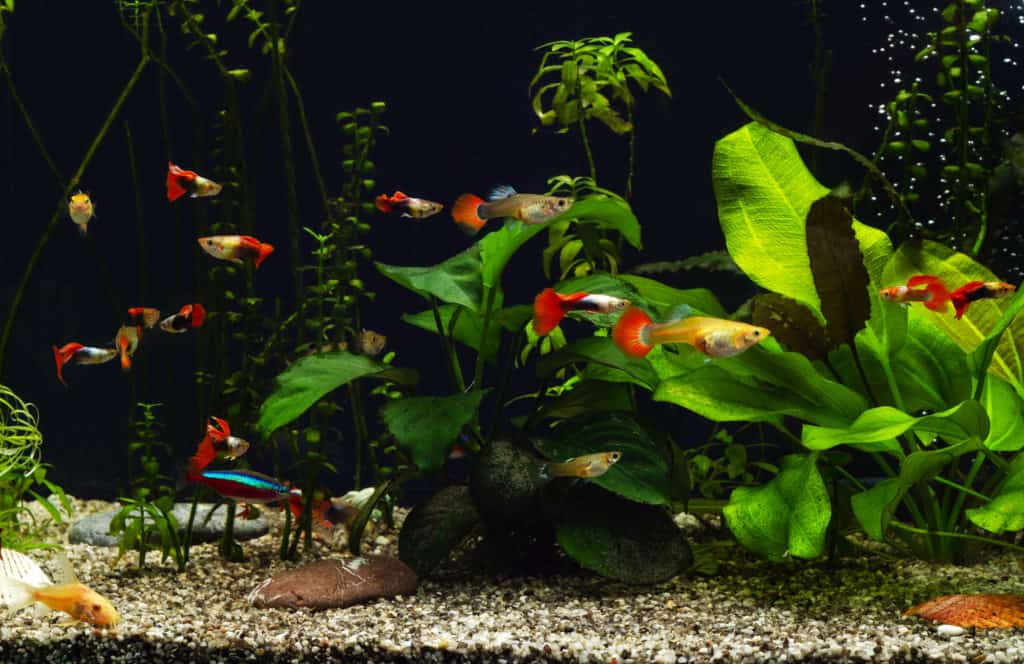
Most aquarium freshwater fish can thrive in temperatures between 70°F and 80°F, and guppies are no exception.
They prefer the water around 72°F and 82°F since they come from tropical regions with warmer waters.
Most importantly, you should keep the temperature stable and avoid fluctuations and sudden changes in the tank.
For example, when you’re doing water changes, make sure the incoming water temperature is close to the tank’s temperature so that the guppies won’t experience any kind of stress.
Change the water gradually and in small amounts.
If you need to transfer your guppies to a new tank, make sure its temperature is in the same range as that of the original tank.
You can use a thermometer for this.
What Happens If Guppies Are Kept in Cold Water?
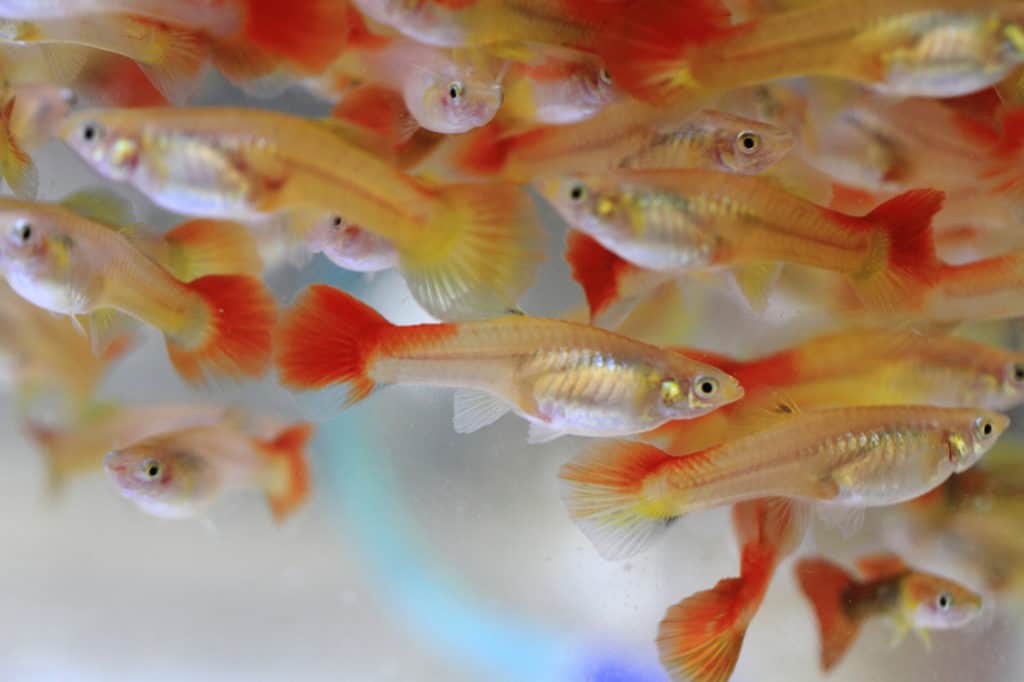
Guppies thrive well in warm waters, but they’re hardy fish and can tolerate a wide range of temperatures.
They can survive if the temperature falls to 65°F, but they definitely can’t thrive.
If the temperature drops below 60°F, your guppies will perish.
In cold waters, guppies will have the following problems:
- Less activity: Your guppies are cold-blooded fish and require warmer environments to have an active and happy life, or else they’ll become sluggish and lethargic. Cold temperatures also slow down their metabolism, which means they’ll digest their food slowly.
- Slow growth rate: Like any other animal, guppies grow faster and better in favorable living conditions, including warm waters. If the temperature drops, the little fish won’t reach maturity.
- Stress build-up: If you keep your guppies in colder temperatures, their immune systems weaken, and they’ll feel stressed. This will lead to a higher chance of their deaths.
- More prone to diseases: As a result of weaker immune systems, guppies will be more vulnerable to diseases in cold environments.
- Breeding issues: Guppies breed well in warm waters, but they’ll stop reproducing in colder temperatures. Even if baby guppies are born, they won’t last long in the cold temperatures.
What Happens If Guppies Are Kept in an Overheated Tank?

As the temperature goes up, the amount of dissolved oxygen in the water goes down.
Guppies can tolerate water temperatures as high as 90°F, but only if it’s well aerated.
Almost all types of fish, including guppies, will die if they’re kept in hot water for long since they can’t breathe easily.
Also, warmer waters often cause behavioral changes like aggression.
It can result in health issues because of increased metabolisms, eventually leading to shorter lifespans.
Warmer temperatures also affect sperm mobility.
A reduction in sperm numbers can lead to breeding issues.
Do Guppies Need a Heater?
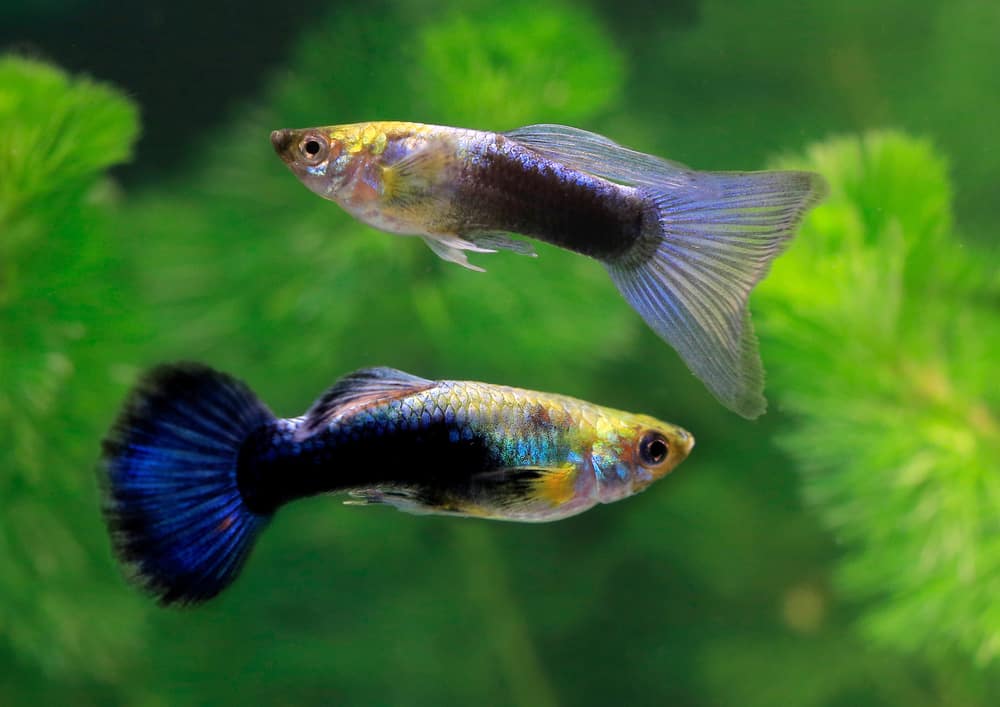
If you live in a region where the winters get cold, you probably set the temperature at 70°F in your house.
Guppies can survive in that temperature, but the problem is that water warms up slower than air.
This means that the water in your aquarium will be below 70°F, and this will bring on health issues for your guppies.
Unless you have mild winters, you will need a heater to warm up the water.
The bigger your tank, the stronger your heater should be.
As a rule of thumb, you need five watts for every gallon of water.
Types of Heaters for Guppies
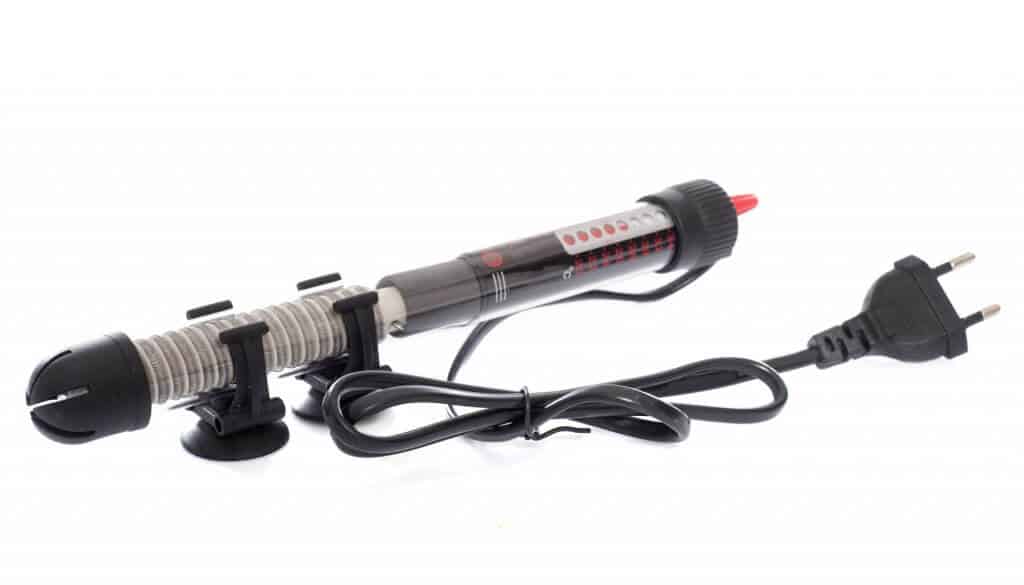
There are four types of heaters, each with its benefits and downsides.
1. Hang-on Heaters
Hang-on heaters are tube-shaped heaters which attach to your aquarium’s inside glass with some suction cups.
They’re designed for freshwater aquariums.
If salt gets in the tube, it can cause electrical problems and corrosion.
Hang-on heaters have heater controls which should stay above the waterline, and this is their biggest downside.
These are the most common heaters as they’re the cheapest, and they usually come with starter aquarium kits.
2. Submersible Heaters
Submersible heaters are made of either durable plastic or glass, and unlike hang-on heaters, you can install them at any angle.
The glass heaters are more fragile, but the plastic ones are easy to handle, which is why they’re a bit more expensive.
As their name suggests, you can put them completely under the water, and that’s why they’re more expensive than hang-on heaters.
3. Substrate Heaters
Substrate heaters have coils or heating cables below the substrate and keep it warm.
If you keep plants with your guppies, substrate heaters are a great option as they keep the roots warm and promote growth.
These heaters distribute heat more evenly and give your tank a more pleasing look since they’re invisible.
The biggest problem with substrate heaters is that you need to take your existing tank setup apart to install them, but if you’re building a tank from scratch, they can be a great choice.
4. Filter Heaters
Some filters can heat the water as it passes through them.
They’re installed outside the tank, so they won’t ruin the view, and aggressive guppies can’t damage them.
Filter heaters are powerful and suitable for larger tanks.
How to Keep the Guppies in Cold Temperatures Without a Heater

If the temperature suddenly drops and you don’t have a heater, or if your heater breaks, you have some options for keeping the tank warm enough until you can fix the problem.
Remember, it’s always a good idea to keep an inexpensive back-up heater for emergencies.
- Sunlight: You can place the tank near a window, where it can get direct or indirect sunlight. This way, you’ll warm up the water, and your guppies will be more active.
- Lighting: A strong lighting system can also warm up the aquarium while giving it a beautiful look.
- Radiator or Fireplace: Keeping the tank near a radiator or fireplace will keep the water warm.
- Kitchen: The kitchen is usually the warmest room in the house, and putting the aquarium there can keep it warmer.
- Retaining the Heat: To retain the existing heat in your tank, you can try covering it with newspaper, towels, or blankets.
You’ll have to be very careful that the temperature doesn’t increase too much, or else your guppies may suffocate to death.
If the water suddenly becomes hot, don’t replace it all at once, because your guppies will experience shock and stress.
Put plastic bags filled with cold water in the tank, and wait until the temperature gradually decreases.
When Should You Raise the Temperature?

Some guppy illnesses are better treated in warmer temperatures, so if your guppies are sick, gradually raise the temperature to 86–90°F while using medication.
Higher temperatures strengthen their immune systems and limit parasite growth in the water.
You shouldn’t keep guppies in warm tanks for more than a week, and you should ensure that the oxygen levels are appropriate during that time using an air pump or filtration.
When young guppies are still larvae, increasing the temperature can alter their phenotypic sex, resulting in many males.
That’s why some breeders increase the temperature to get more male guppies if needed.
Can You Keep the Guppies Outside?
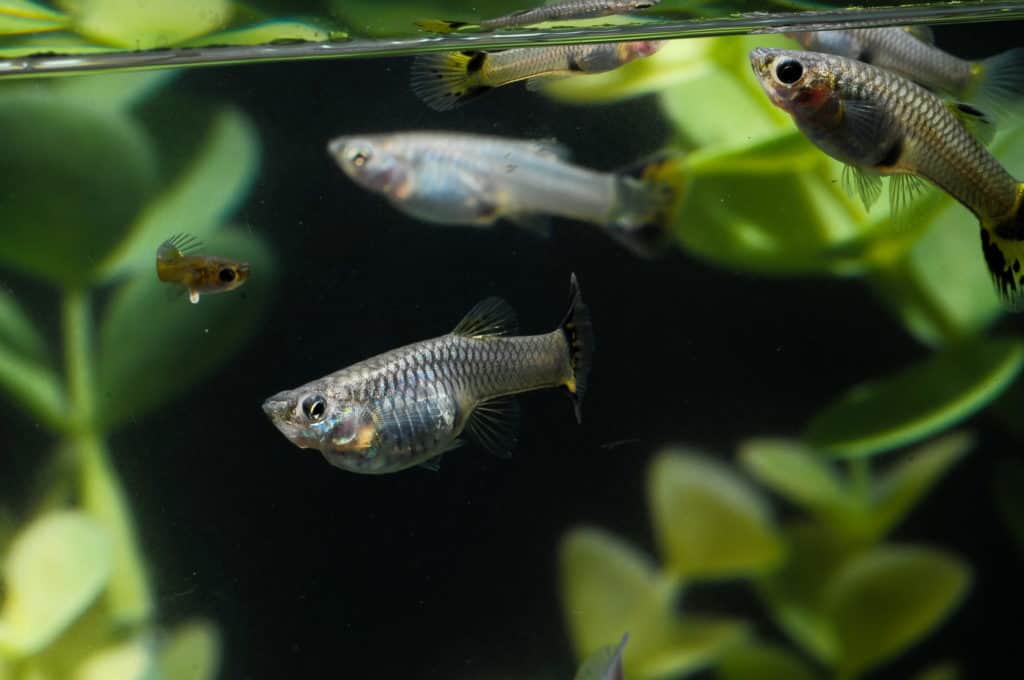
You can keep your guppies outside in ponds, and they’ll love it, but the duration depends on where you live.
If you live in an area where it’s warm all year long, and the temperature doesn’t drop below 70°F, you can keep your guppies outside all the time without having to worry about anything.
Keeping guppies in places where winters get chilly is another story.
You can set up your ponds in the spring when it doesn’t get too cold.
The sunlight will transfer heat to the water, which will retain the heat during the night.
In the summer, try to provide some shade for your guppies so that the water temperature doesn’t exceed its limit.
When the temperature starts to fall during autumn, you can either bring the guppies inside or install special heaters for the pond.
These heaters can be prohibitively expensive, though.
Even without the heater, you can still keep your guppies outside six or seven months a year without much trouble.
However, if you live in an area where the temperature falls below the freezing point, keeping guppies outside is off the table.
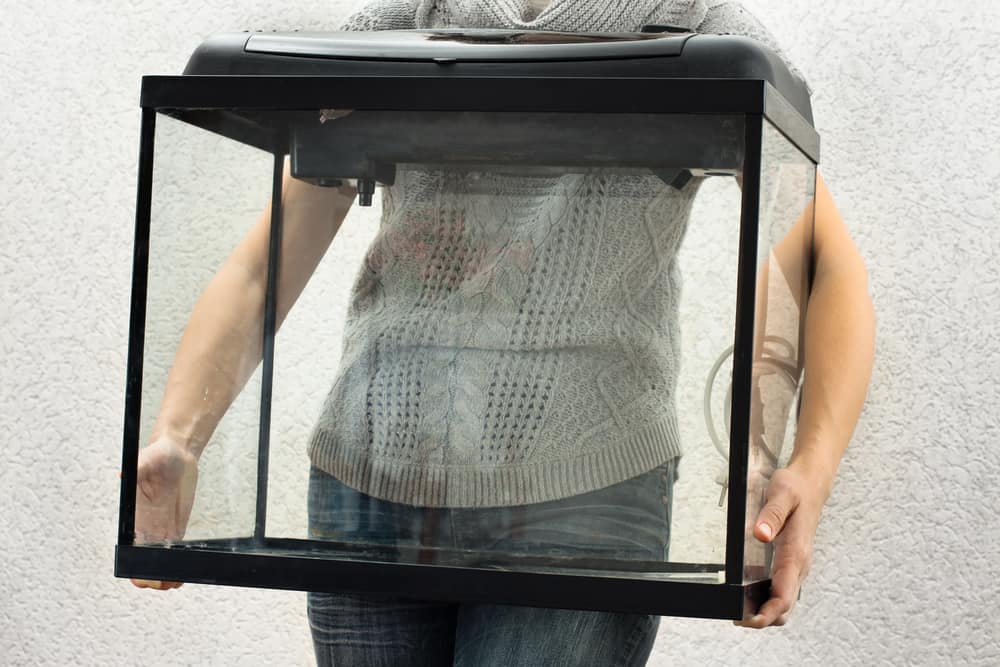
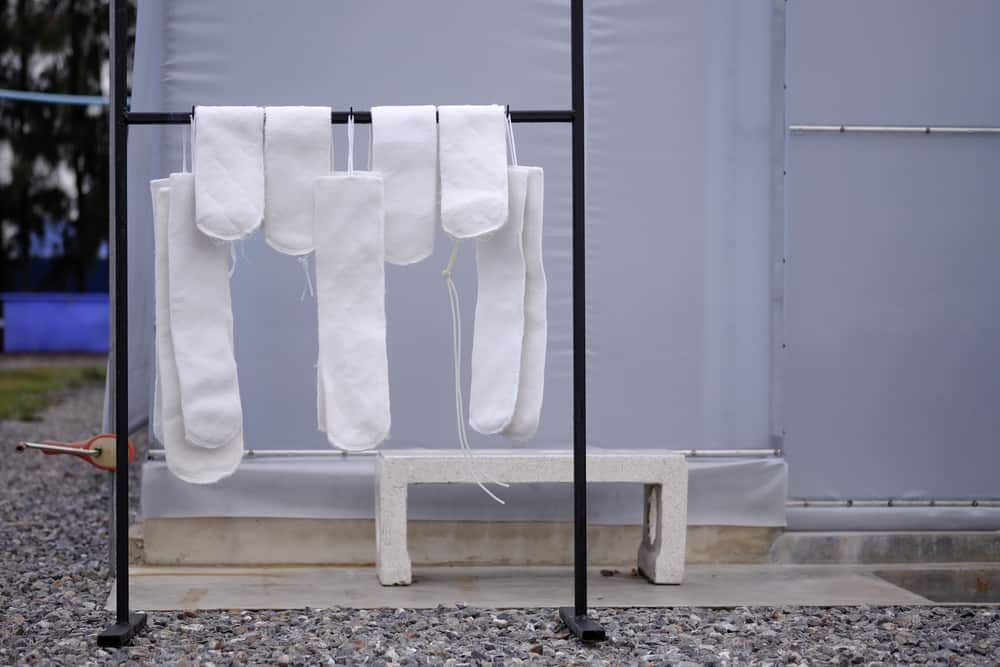
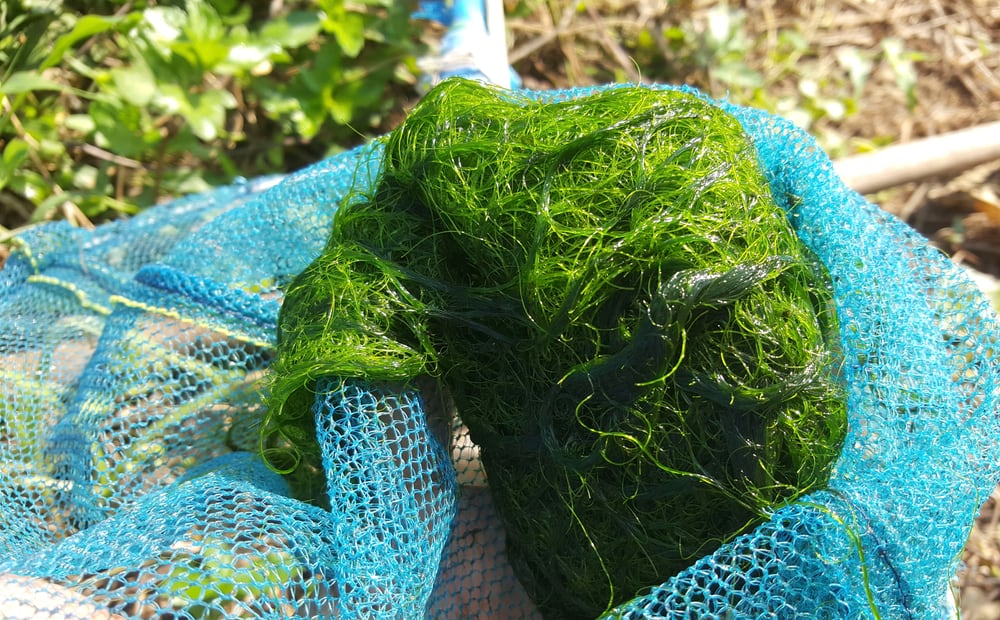
Leave a Reply
You must be logged in to post a comment.